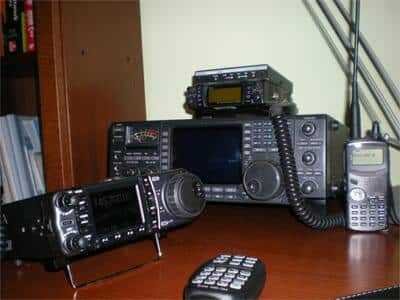
This location is south east Australia.ġ9.8 kHz is in North West Cape, Western Australia.

Until 2004 it used the call sign V元DEF on 13 kHz. To account for the 10 db difference in the VLF morning 5.52am (1852UTC) signal strength in Sydney I have found that the two transmitters are in different locations in Australia (This is different to my earlier report).ġ8.6 kHz is in Woodside, Victoria, Australia and uses a 432 metre high grounded lattice steel guyed mast. Signals were both the same signal strength. (Strongest signal strength).ġ9.8 kHz was minus 62 db. (Strongest signal strength).ġ8.6 kHz was minus 52 db. (Strongest signal strength).Īt other times during day and night both signals are normally within a 3 db difference.ġ8.6 kHz was minus 69 db. On the 3 November 2008 in Sydney before sunrise at 5.52am (1852UTC) I noticed that the Very Low Frequency (VLF) signals on 18.6 kHz and 19.8 kHz had a 10db difference in strength.ġ9.8 kHz was minus 60 db. To tune the frequency exactly press U on the keyboard to move the receiver frequency up in 1 Hz steps or press D to move down 1 Hz steps.Ģ VLF transmitting stations in the Australian Naval submarine broadcast communication system. The displayed frequency is now the exact broadcast frequency of the signal that you selected. You can add 0.700 kHz to the displayed local oscillator frequency to calculate the exact broadcast frequency of a signal centred inside the receiver pass band filter.Ī faster way to find the exact broadcast frequency of a signal is to use the mouse to move the RED vertical line in the panoramic display onto the signal. The frequency displayed on the SAQrx Soundcard based Very Low Frequency Upper Sideband (USB) VLF radio receiver is the local oscillator frequency centred on a 700 Hz pitch. The receiver panoramic display shows all signals across the Very Low Frequency 0 to 22 kHz band making it easy to quickly see an unusual signal that might otherwise be missed. The signal repeatedly peaked at minus 75db and disappear into the minus 82db noise level. On 30 October 2008 at 1030 UTC (9.30pm Sydney Daylight Saving Time) a Very Low Frequency (VLF) 15.625 kHz signal was heard and seen fading in and out over a period of a few minutes on the panoramic display. VLF signal heard on Russian navagation system VLF frequency 15.625 kHz.ġ5.625 kHz is allocated to the Russian Alpha (RSDN-20- Radiotekhnitsheskaya Sistema Dalyokoi Navigatsii or radio technical long distance navigation) system.
#What is a vlf receiver software#
This is another memorable reception on this great 0 to 22 kHz computer software VLF receiver. I heard and saw the VLF 18.100 kHz signals on 30 October 2008 at-ġ726UTC (4.26am Sydney morning time) signal strength -80db.ġ856UTC (5.56am Sydney morning time) signal strength -78db.Ġ427UTC (3.27pm Sydney afternoon time) signal strength -78db. The Panoramic display on the receiver (or should I say computer) allows you to see the Russian radio broadcast twin-peak waveform inside the receivers 300Hz filter. I heard the synchronisation signals of the BEE 36/50 200 Hz shift FSK mode broadcast. Molodechno, Belarus (south of European Russia) The Russian Very Low Frequency (VLF) network is made up of 6 VLF transmitters located. Today using the SAQrx Soundcard based Very Low Frequency VLF radio receiver which works below 22 kHz I heard the Russian Strategic Command.ġ8.100 kHz Russian Strategic Nuclear Forces (SNF) Command and Control broadcast of the Supreme High Command of the Armed Forces (Verkhovnoe Glavnokomandovanie VKG) General Staff network headquarters in Moscow. I heard Australian, USA and Japanese submarine broadcasts but until today I was not able to hear the Russian Very Low Frequency broadcasts. This year I used the Kenwood TS480HX transceiver which can receive as low as 20 kHz in the VLF band. Russian Strategic Nuclear Forces Command and Control Network on VLF frequency 18.100 kHz.


If all is OK run a long wire outside and try suggestion 5 above again on 7 Khz and 17 kHz. If nothing then antenna is not connected.Ħ. You should hear the occasional atmospheric "tick" or "click" noise. Select the 2.4 kHz bandwidth and tune to approximatly 7 kHz. Minus 30 db (on a 1.8 MHz antenna) to minus 15 db (on a short piece of wire) at 0 kHz is normal with the antenna connected correctly to a stereo 3.5mm plug.ĥ. If noise is between minus 60 db to minus 50 db at 0 kHz there is no antenna input. If the noise level is peaking MINUS 90db across all frequencies then there is no signal from the antenna.Ĥ. If unsure you can try both to find the correct one.ģ. If you are using stereo check that the aerial is soldered to the left stereo connection on the 3.5mm plug. Check that you are using a stereo 3.5mm plug. Here are some tips to test your VLF receiver.ġ. HELLO KJ4BIC- REGARDING YOUR RECEIVER NOT RECEIVING


 0 kommentar(er)
0 kommentar(er)
